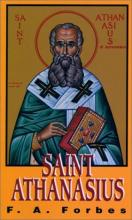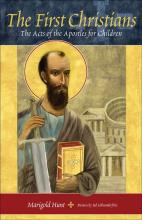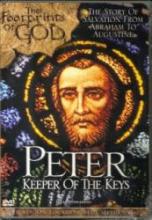Early Church Biographies
Saint Athanasius
This short, and fairly easy to read biography chronicles the life of Saint Athanasius (early 300s) – Patriarch/bishop of Alexandria and Doctor of the Church (and model of perserverance). Athanasius was a defender of the faith in a very critical time in the early Church's history. Even before the Edict of Milan which allowed Christians to practice their faith freely (at least for a time), the heresy of Arianism, which denied the divinity of Christ, was beginning its attack on the Church. Although the heresy was firmly rejected at the Council of Nicea (325 A.D.), the heretics were very powerful and continued to attack the Church – even winning the Emperor Constantine to their side. While the heresy was never embraced by the Pope, the heretics used the Emperor to banish orthodox bishops from their diocese, replacing them with those sympathetic to their rebellious ideas. All through this difficult time, Athanasius led his people (sometimes while in hiding with the desert monks for years at a time) by his writings.
St Monica: Model of Christian Mothers
The author, F.A. Forbes, was a nun who converted to Catholicism at the age of 31 and joined a contemplative order. She wrote several other saints' books. This is a short book, and told simply enough so that an 11-year-old could read it, though I would think a slightly older child would get more out of the book. Patricius' infidelity and Augustine's sins of the flesh are referred to only in the most general terms. Included are several prayers to St. Monica, including a litany and a novena.
It could be read as part of a historical study of the early Church or as a devotional reading. It would also be a good book for mothers to turn to when they are weary of the inevitable frustrations of being a wife and mother - and daughter in law! St Monica's perseverance and continual turning to God for strength make her, indeed, the model of Christian mothers.
Suitable for ages 11 and up.
The First Christians
The sequel to A Life of Our Lord for Children, this title by Marigold Hunt tells the story of the infant Church. After a few introductory remarks, the story begins with the Pentecost (Acts 1) and ends with Paul's visit to the Jews of Rome (Acts 28). The beauty of this book is the wonderful storytelling style of Hunt. It is a great book to read aloud because then it really sounds as if she is speaking to us. One day I was reading out loud to my nine year-old and all the other children had gathered around. My eleven year-old said, "That's a cool author." I know he meant, "I love to hear the way that author tells a story."
At the beginning of each chapter Hunt lists the corresponding chapters from Acts of the Apostles. At various points in the text she recommends the reader go and read from the Bible. For example, when she describes the Pentecost, she suggests that the reader reads Peter's speech which is recorded in Acts 2. She calls it the "very first sermon of the very first pope." I have to admit that when I read her suggestions, I wanted to hop up and read the Bible version! Hunt selects particular tales from Acts, saying that she couldn't tell all that happened. However, she selects those that would be of most interest to young readers. For example, she chooses to include the story of Philip running next to the chariot of the Treasurer to tell him about the Faith, which is kind of a funny image. Hunt also does a good job explaining the problem that Christians Jews had with gentiles becoming Christian without keeping the "law of Moses," and how it was resolved. She makes it clear that Peter makes the final decision, and that when he does, everyone accepts it, clearly establishing him historically as the leader of the Church. With every story she explains things in ways a child would understand by comparing them to things in our own time.
As with A Life of Our Lord for Children, this edition, reissued in 2004, is illustrated by Ted Schluenderfritz (a homeschooling dad!). His drawings add greatly to the text. This is a book that will appeal to all children and is a joy to read aloud. It could be read independently by a 4th grader.



